14.5: Triple Integrals in Rectangular Coordinates
( \newcommand{\kernel}{\mathrm{null}\,}\)
- Recognize when a function of three variables is integrable over a rectangular box.
- Evaluate a triple integral by expressing it as an iterated integral.
- Recognize when a function of three variables is integrable over a closed and bounded region.
- Simplify a calculation by changing the order of integration of a triple integral.
- Calculate the average value of a function of three variables.
Previously, we discussed the double integral of a function
Integrable Functions of Three Variables
We can define a rectangular box
We follow a similar procedure to what we did in previously. We divide the interval
divide the interval
and divide the interval
Then the rectangular box
as shown in Figure
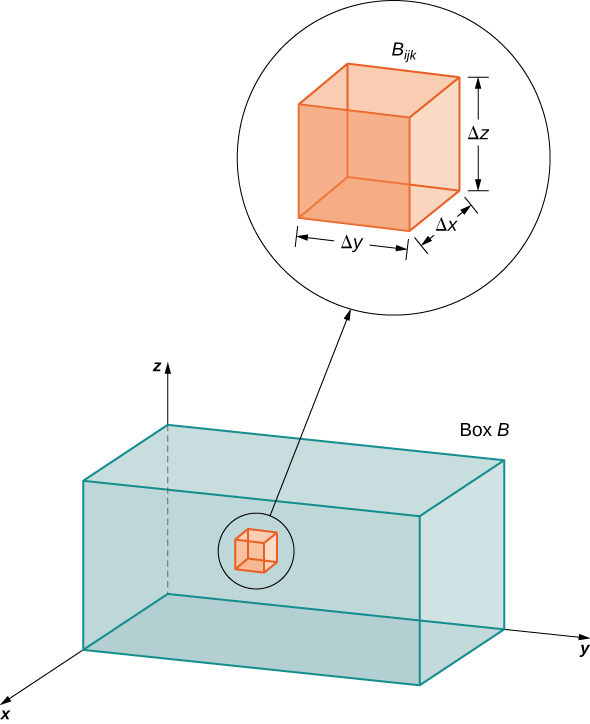
For each
We define the triple integral in terms of the limit of a triple Riemann sum, as we did for the double integral in terms of a double Riemann sum.
The triple integral of a function
When the triple integral exists on
Now that we have developed the concept of the triple integral, we need to know how to compute it. Just as in the case of the double integral, we can have an iterated triple integral, and consequently, a version of Fubini’s theorem for triple integrals exists.
If
This integral is also equal to any of the other five possible orderings for the iterated triple integral.
For
For a rectangular box, the order of integration does not make any significant difference in the level of difficulty in computation. We compute triple integrals using Fubini’s Theorem rather than using the Riemann sum definition. We follow the order of integration in the same way as we did for double integrals (that is, from inside to outside).
Evaluate the triple integral
Solution
The order of integration is specified in the problem, so integrate with respect to
Evaluate the triple integral
where

Solution
The order is not specified, but we can use the iterated integral in any order without changing the level of difficulty. Choose, say, to integrate
Now try to integrate in a different order just to see that we get the same answer. Choose to integrate with respect to
Evaluate the triple integral
where
- Hint
-
Follow the steps in the previous example.
- Answer
-
The triple integral of a continuous function
in
Similarly, we can consider a general bounded region
Finally, if
Note that the region
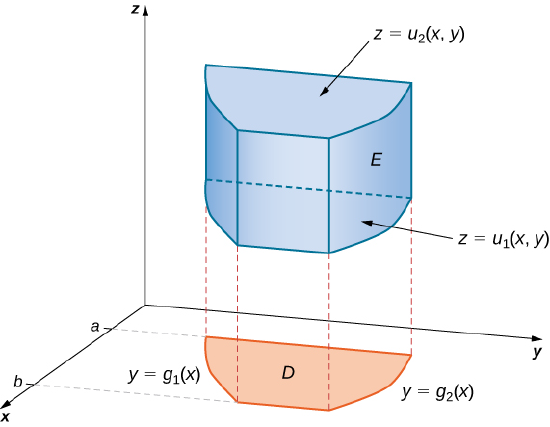
Then the triple integral becomes
If
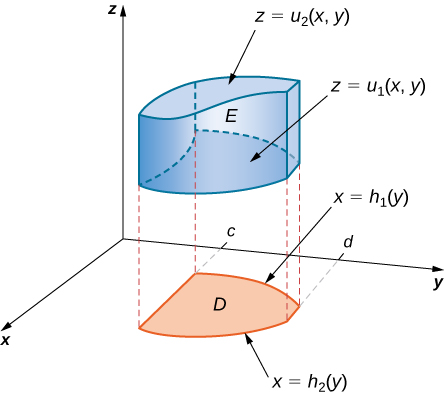
Then the triple integral becomes
Evaluate the triple integral of the function
Solution
Figure
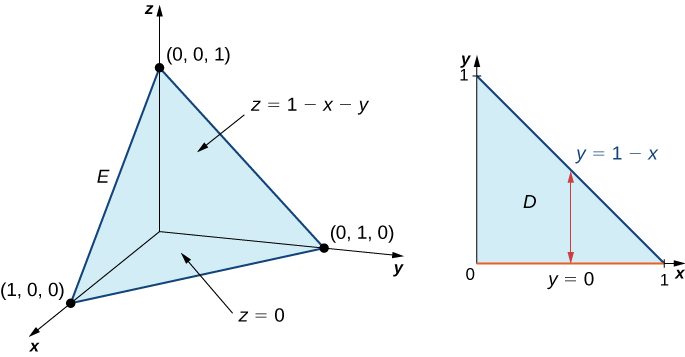
We can describe the solid region tetrahedron as
Hence, the triple integral is
To simplify the calculation, first evaluate the integral
Now evaluate the integral
obtaining
Finally evaluate
Putting it all together, we have
Just as we used the double integral
Find the volume of a right pyramid that has the square base in the
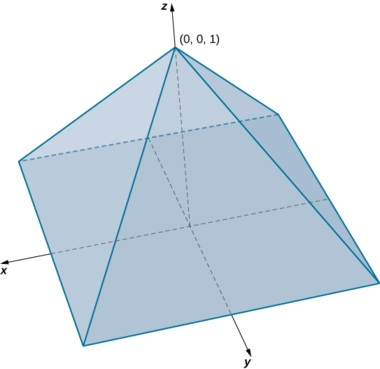
Solution
In this pyramid the value of
Hence, the volume of the pyramid is
Thus, we have
Hence, the volume of the pyramid is
Consider the solid sphere
- Hint
-
Follow the steps in the previous example. Use symmetry.
- Answer
-
Changing the Order of Integration
As we have already seen in double integrals over general bounded regions, changing the order of the integration is done quite often to simplify the computation. With a triple integral over a rectangular box, the order of integration does not change the level of difficulty of the calculation. However, with a triple integral over a general bounded region, choosing an appropriate order of integration can simplify the computation quite a bit. Sometimes making the change to polar coordinates can also be very helpful. We demonstrate two examples here.
Consider the iterated integral
The order of integration here is first with respect to z, then y, and then x. Express this integral by changing the order of integration to be first with respect to
Solution
The best way to do this is to sketch the region
and
We need to express this triple integral as
Knowing the region
on the
on the
on the

Now we can describe the same region
Now assume that
The answers match.
Write five different iterated integrals equal to the given integral
- Hint
-
Follow the steps in the previous example, using the region
- Answer
-
Evaluate the triple integral
where
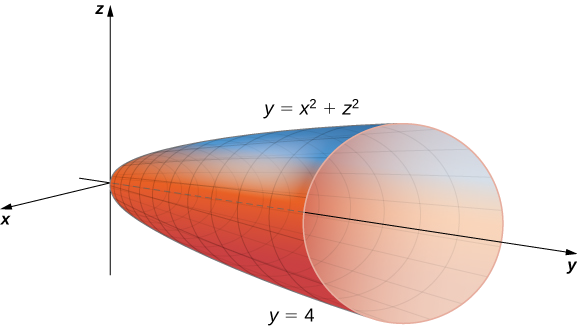
Solution
The projection of the solid region
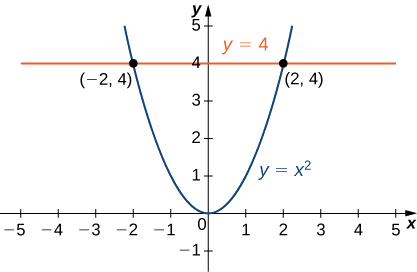
Thus, we have
The triple integral becomes
This expression is difficult to compute, so consider the projection of
Here the order of integration changes from being first with respect to
Now use the polar substitution
Average Value of a Function of Three Variables
Recall that we found the average value of a function of two variables by evaluating the double integral over a region on the plane and then dividing by the area of the region. Similarly, we can find the average value of a function in three variables by evaluating the triple integral over a solid region and then dividing by the volume of the solid.
If
Note that the volume is
The temperature at a point
Solution
Use the theorem given above and the triple integral to find the numerator and the denominator. Then do the division. Notice that the plane
Hence the triple integral of the temperature is
The volume evaluation is
Hence the average value is
Find the average value of the function
- Hint
-
Follow the steps in the previous example.
- Answer
-
Key Concepts
- To compute a triple integral we use Fubini’s theorem, which states that if
- To compute the volume of a general solid bounded region
- Interchanging the order of the iterated integrals does not change the answer. As a matter of fact, interchanging the order of integration can help simplify the computation.
- To compute the average value of a function over a general three-dimensional region, we use
Key Equations
- Triple integral
Glossary
- triple integral
- the triple integral of a continuous function


Triple Integrals over a General Bounded Region
We now expand the definition of the triple integral to compute a triple integral over a more general bounded region
For two functions